Bivalent Covid Boosters and Unbalanced Bees
In science news this week: the UK has approved a new COVID-19 vaccine which hopes to tackle the omicron variant, and scientists alter the blood type compatibility of a kidney outside the body. Plus, we investigate if e-scooter riders are more reckless than cyclists, how brain scans can be used to better predict learning over tests, and what chemicals make bees wobbly...
In this episode
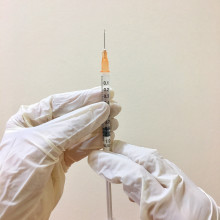
00:58 - New bivalent Covid vaccine
New bivalent Covid vaccine
Mary Ramsay, UK Health Security Agency
We are no strangers to new vaccines - over the past couple of years, several have been manufactured and millions of doses administered to help us build immunity to SARS-CoV-2, the virus that causes COVID-19. But while our vaccines have remained the same since the start of the pandemic, the coronavirus causing it has not. We have seen variants sweep through populations causing spikes in infection before another one inevitably seems to take hold. The most recent variant - omicron - has been responsible for the uptick in cases we have seen over the past month or so in the UK. But now, a new vaccine, made by Moderna, has just been approved for use in the UK, and this one has had an update. Here to tell us more is Mary Ramsay from the UK Health Security Agency…
Mary - So the vaccine is very similar to the previous one. And the way these vaccines work is by triggering your body to make a protein. That protein is what's acting as the vaccine, the original vaccine by Moderna made you make a spike protein, which is the protein that's thought to be important for protection against COVID. And that protein was from the original strain that was identified in Wuhan. But this new vaccine has two components. Half of it is the old vaccine, and it makes your body make that original spike protein, and the other half helps you to make the protein that is the one from Omicron, which is a slightly different form of the same spike protein. So the vaccine really is very, very similar apart from the fact that you get two boosts to your immunity, one against the Wuhan strain and one against the Omicron strain.
James - Is there anything to suggest that by engineering this new bivalent vaccine, one which is effective against both the original variant and the omicron variant of the virus, you're compensating on the effectiveness against one of the variants in order to have better protection across the board?
Mary - No, not really. They compared the immune responses against a range of variants, but against the original one, you've got a really good boost. Obviously, most people who will be having this vaccine have already had several doses of the original vaccine. So they boosted very well to that. So that gave them high levels against that, but actually slightly higher than you saw with a normal vaccine. And then on a top of that, they got this additional boost against the Omicron BA. 1 strain, which was the first omicron strain to emerge. So actually, we're getting better and broader immunity with each element of the vaccine.
James - You mentioned some of the success that you've had in some trials. So when will this be available? And for who?
Mary - I think the UK has bought a lot of this vaccine, and we're also working with Pfizer who are doing a similar process. So we're expecting to have both of those vaccines available if the Pfizer one gets approved, or the Moderna one is the first one to be approved. We hope that the Moderna and probably the Pfizer are going to be available this winter. So we're hoping that a good proportion of the winter programme will be with these variant vaccines. However, it's possible, certainly in the early stages, if we only have one vaccine, there will be perhaps not be enough to do everyone. And I think the basic message we need to get over is that even the old form of the vaccine does give you a very good boost. It gives you a very good boost against Wuhan strain, the original strain, but also against the Omicron strain and against other strains. And actually, as you know, we are not going to know which strain is circulating this winter until we get there. So the real important message is to have the vaccine on time, because either booster is better than no booster. I'm hoping that most people will be able to get the offer of the bivalent vaccine, but the other vaccine is still very, very good. And boosting your immunity will give you protection against the more severe forms of disease, whatever strain comes in.
James - And Mary, are there other vaccines being adapted to combat variants of concern.
Mary - Both of those manufacturers are able to twist the technology to introduce other variants. And I know they are looking at other potential variants to include in the vaccine. And then some other manufacturers are using different approaches. Some, companies have used what we call adjuvants. So these are additional elements in the vaccine that help to boost the immune response above and beyond the protein itself. And they may help to broaden the immunity. And obviously the holy grail is to have something that has very broad protection. And obviously the vaccine manufacturers are working all the time to see what they can do. But I think the most likely, in the short term, is to have different forms of the same kind of vaccines, but maybe directed against different variants. And maybe by putting more than one together, we're hoping that you get a broader response that will cover a wider range of whatever variant might emerge over the season.
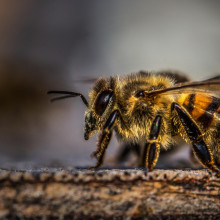
05:56 - Pesticides are knocking bees off balance
Pesticides are knocking bees off balance
Rachel Parkinson, University of Oxford
There has been a lot of buzz in the last few years around protecting bees. Their pollination contributes to one third of the world’s food production, but their numbers have seen a dramatic decline in the past few decades. The reasons behind this include climate change, habitat loss, disease and also pesticides, with a new study hoping to highlight just how some pesticides may be seriously harming a bee’s eyesight. Rachel Parkinson, of the University of Oxford, devised an experiment to determine the effects of pesticides on a bee’s ‘optomotor response’, which re-orients a bee that has been blown off course. She has been speaking to Will Tingle about how bees react to these chemicals, and how we might help our flying friends.
Rachel - Primarily the effects that I saw were that the bees, although otherwise they seemed fine, they were moving around in a very kind of normal way in their cage. When I put them on this air supported ball for them to respond to the moving gradings, they were not able to turn accurately in order to follow the direction of motion. So their ability to perform this reflex-like behaviour was really diminished, was really impaired.
Will - What are the ramifications for this sudden impairment on their visual acuity, in relation to how they would go about their daily lives?
Rachel - Right, so this reflex is crucial so that these insects are able to maintain a steady heading. As a teeny tiny insect, it happens very often that there could come along a gust of wind that blows you off course, and you need to be able to very quickly right yourself in order to know where you are in the world. And so if the ability to properly orient themselves is lost, then it's quite likely that there would be other effects on their ability to navigate.
Will - Where are these pesticides most commonly found?
Rachel - So these pesticides are very commonly included in seed treatment mixtures. So what that means is that they're actually treating the seeds of various agricultural crops with pesticides prior to planting them. And then what happens is the pesticides become incorporated into all parts of the plant. So Sulfoxaflor is a very new pesticide. It's only been in commercial use for a few years. And already we have seen a variety of effects that this insecticide is having on different animals that interact with these crops.
Will - And I assume that this is not specific to bees as well. There are other insects that are having similar issues.
Rachel - Yeah, well, you know the purpose of pesticides is to kill insects. That's what they're designed to do. And unfortunately they're generally not specific to a particular type of insect. As it turns out, bees tend to be especially vulnerable when it comes to a lot of insecticides because they just don't have the same detoxification machinery in their body to deal with them.
Will - So if these pesticides cannot really distinguish between friend or foe, are there any ecologically friendly alternatives that we could perhaps use?
Rachel - Yeah, that's a really complicated topic and I'm hesitant to sort of go down the path of 'let's just ban all pesticides' because of course we need agriculture and we need it to function in this way in order to feed the world. Um, so there needs to be very high output. I would hope that there's a way that we can maybe rethink the way pesticides are used, maybe less so prophylactically, so less so as a preventative measure like treating an entire field with insecticides before there's any pests present. Perhaps trying more to treat only when necessary. But again, it's a very complicated, a very complicated problem.
Will - If the subject of pesticides is so nuanced, are there alternative ways we can reduce bees and other insects' exposure towards pesticides?
Rachel - You know in nature, there are many natural pest control methods, including birds and maybe other types of insects that, if they were allowed to thrive in these environments, that perhaps there would be a more natural way to manage pests. Also even in the realm of pesticide use, trying to find different options that are going to be specific to the pests that we're trying to eliminate, rather than these sort of generalist insecticides.
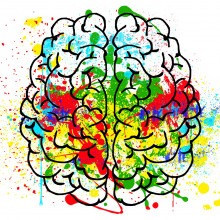
10:38 - Could brain scans change the way we learn?
Could brain scans change the way we learn?
Rob Cortes & Adam Green, Georgetown University
Standardised testing has been a cornerstone of education when it comes to measuring a student’s development. But, as we come to better understand how our minds operate, could brain scans help to tell us more about how we learn, and even surpass test scores when it comes to predicting students' learning? Julia has been talking to Rob Cortes and Adam Green, of the University of Georgetown, to see how MRI scans can highlight brain development, as well as how different areas of the brain interact to help us develop faster.
Rob - Yeah. The students that we looked at were taking a real world high school course in Virginia. And it was called the 'geospatial course' and they took it over an entire year. And the main focus of that course was to learn geographical information systems, mapping. Basically to build maps and representations of data, to sort of solve complex problems. And we had a hypothesis that building these spatial skills might also transfer to verbal reasoning, which was our main sort of outcome of far transfer. If most of our reasonability is underlied by these spatial representations, then if the students taking this class improve on those spatial skills, they might also improve on the reasoning. And that's what we found. They improved on spatial skills that they weren't trained on in the class. They also improved on verbal reasoning and then the improvement in those spatial skills directly tracked with and mediated that improvement in verbal reasoning, which was really exciting. And then, like we mentioned, we were able to also look at their brain activity during that time and that was even more predictive.
Julia - I'm guessing that you scanned them at the beginning at the end of the course. So when you compared that change over time, what was the comparison in terms of showing that they've learned something compared to the test scores?
Adam - So we scan them before with a brain scan using functional magnetic resonance imaging. A lot of people have probably been in an MRI. This is a method that uses the same technology in a slightly different way to look at how blood is flowing in the brain as a measure of where activity is happening in the brain. And so we use this measure both before and after they took this class as a way of looking at a change, because learning is always a change. And so, if you're going to measure learning, you need to do that in this kind of longitudinal way with at least two time points. When we looked at that change, we compared that change to the change in performance, which is to say how well they did on some tests of verbal and spatial thinking. And we also compared that brain change to the ways that we are all used to having learning measured like our grades and our performance within a class. And in every way that we looked at it, the brain was the most predictive thing to tell you how well students were gonna be able to transfer what they learned.
Julia - And you taught the participants a space based task. And then you were looking to see if their skills improved, not just in similar tasks, but different tasks and verbal based tasks. And you did see that. So why do you think there is this transfer and is spatial learning a good thing for people to be doing to improve skills elsewhere?
Adam - Yeah and I think it's particularly timely and this is something that Rob and I have been talking about recently. I think our brains are getting a little bit soft and mushy when it comes to spatial cognition. So it may be that it's more important than ever for students to take a class like this. The reason I say that is we're relying more and more on our devices to map the world for us. People get completely turned around and completely hopeless if the GPS loses signal or the cell phone loses signal while they're driving. Things that seem verbal on the surface are actually relying on spatial resources in the brain. So we're building these shapes and these quasi spatial images in our head to spacialise information that seems verbal. The reason we do that is because our brains, the build of our brains through evolution, is already good at spatial stuff. So evolution tends to be fairly parsimonious and, rather than just building a new brain part to do a new task that becomes relevant, what tends to happen is the co-opting of resources that are already there, that are already good at doing something, and then transferring or transforming the information we get to be understandable. In this case, spatial terms. So that our good spatial resources can handle them.
Julia - And Rob, I'm guessing you've done a lot of brain scans. These things take a lot of time, especially with the analysis of the data. So we can't really scan every pupil at the start of the year and the end of the year to see if they've learned something. So how do you think this technique could be used to improve education on a mass scale?
Rob - I think we've touched on a little bit but, diving deeper, I think one of the key areas would be curriculum development. So that's something that typically happens on a small scale anyway. When we're testing out different curriculums of ways of teaching a certain subject, you can scale up that curriculum. We find the one that works best in an evidence based way. Then we can scale that up and have really strong evidence that that is an effective curriculum at improving learning and changing students' brains.
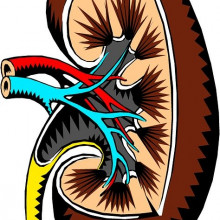
16:29 - A breakthrough in kidney transplants
A breakthrough in kidney transplants
Serena MacMillan, University of Cambridge
This week a huge leap forward has been made in potentially making organs for transplant accessible to more people.The NHS estimates there to be around 7000 people on the UK Transplant Waiting List. Last year, over 420 people died while waiting for a transplant. A large number of those on the waiting list will be those suffering from kidney failure. So why can’t anyone donate one of their kidneys to someone in need? Well, it comes down to blood type. Someone with type A can’t donate to someone with type B, and vice versa. But, now, researchers from the University of Cambridge may be well on the way to bypassing this problem: they’ve converted a B-type kidney into an O-type…
Serena - So the waiting time for a kidney is disproportionately large, if you're a blood group O or B, and that's due to the fact that you said you need this compatibility between the different blood group types. So because type B can only receive a type B or O organ, and type O can only receive O, they wait a bit longer because there's a lower percentage of those kidneys being available to them. Whereas in the UK, a lot of people are group A as well, so you end up with a higher proportion of kidneys available for people with that blood group, for example. So, sadly for people who are blood group O and B, you're waiting typically twice as long as if your blood group a at the moment.
Julia - Big difference there, what was the work that you've done to try and help combat this?
Serena - So, yeah, our lab specializes in something called normothermic machine perfusion, which sounds very complicated, but is actually really simple. So basically we take a donor kidney and are able to pump it full of blood outside of the body. Now, what we were able to do with this is introduce an enzyme which works like a pair of molecular scissors, and that removes this A or B type from the surface of the cells of the kidney. So we can apply these molecular scissors to an organ outside the body, and then basically remove the antigens or markers that are causing that lack of compatibility.
Julia - So what effects could this work actually have?
Serena - Yes, that's a really exciting thought for this kind of early stage work, but the real take home message from this is that we might be able to remove this ABO barrier completely from transplantation. The future goal is to be able to make any kidney of any blood group accessible to any recipient, so that the next kidney that comes on the list isn't for a particular blood group or a person who's A or person is B. It just goes to the next person. So the hope is that we're able to introduce this sort of technique and hone it down to make it work as well as we can, and then potentially allow a better allocation and distribution of the donor kidneys that are available.
Julia - Is blood group the only measure of compatibility that you have to have when you're trying to match someone up with a potential organ for transplant.
Serena - So, no, if you imagine it as a series of hurdles, then there are quite a few. There's the ABO compatibility. There's something called HLA compatibility as well, which is to do with tissue typing. And while the blood group compatibility isn't the only barrier, it's still getting rid of one of the hurdles. So you're able to already bypass potentially one of the key restrictions to allocating a donor kidney. Our work is purely based on this part of the moment, but future research, who knows? We'll be able to make any kidney for anybody with no restrictions whatsoever. Wouldn't that be great?
Julia - That would be incredible. So do you think, we are talking about kidneys here, but obviously there are other organs that are required for transplantation. Do you think this has the potential to cross over from just the work you did for kidneys? The technique that you are using, would that work on other organs as well?
Serena - Absolutely. So there was a great paper from America last year - early this year, I should say, who did a similar thing, looking at lungs. So proof of principle in that organ, but equally being able to perfuse an organ outside the body. We can do it with the liver, we can do it with the heart. So it's all in terms of optimizing this therapy for the different organs, which obviously hasn't been tried yet, but the principle is definitely there.

20:52 - Are e-scooters as dangerous as bicycles?
Are e-scooters as dangerous as bicycles?
August Stray, Oslo University Hospital
Transport Secretary Grant Shapps has come under fire from cycling groups for comments he made during an interview with the Daily Mail, expressing his interest in implementing mandatory registration and insurance for cyclists. As part of the same interview, he stated that he “absolutely” wanted to enforce speed limits upon cyclists, the argument being that if car users are penalised for breaking road rules, bicycle users should be too. E-scooters meanwhile, an increasingly popular way to get across our towns and cities these past few years, are restricted to a 15.5 mph speed limit in a bid to put a cap on serious injuries. New research conducted by August Stray at the Oslo University Hospital in Norway has been looking into trends in bicycle and e-scooter injuries, one of the most shocking findings being that only 2% of e-scooter injury patients were using a helmet at the time of their accident. James Tytko spoke to Dr Stray to find out more about the differences in accidents between these two-wheeled transport technologies…
August - We saw between 20 and 40 years of age, there's a large volume of e-scooter riders injured. Not that many bicyclists. When we look at children, we almost find no e-scooter accidents. That could be because the children are not able to rent an e-scooter. You often need a phone, you need an app. And then when we looked at the above 40 years of age, we see that quite a few cyclists are injured. So it's more condensed between 20 to 40 years of age between e-scooter riders,
James - August also found a big difference in the times of day these injuries were most occurring.
August - We see quite a bit of bicycle accidents during the commuting hours between 7 and 9. And then we see a lot of bicycle accidents, again between 3 and 5 o'clock in the afternoon, but then after 5 o'clock what we see is that there is a shift, there is less bicycle accidents, but more these e-scooter accidents and it plateaus around midnight until 2 AM. What you would describe as the social hours, I guess.
James - And then the final piece of this jigsaw might not surprise you.
August - Yeah, exactly. During night time, I think it was 91% of the riders were influenced by alcohol or intoxicated, a drastic difference between the two groups there.
James - So many more injuries sustained on e-scooters occur amongst patients between the ages of 20 and 40, during the night with alcohol, more often a factor. This is all compared with bicycle injuries, remember.
August - A very important point is the question about availability, you're probably more likely to use them from a bar or something and there's an e-scooter there. I would say it's quite available and probably tempting to just hop on and go home. Who's to blame? I don't know. It's interesting.
James - Who's to blame indeed? The question this research throws up is- what's the right course of action to reduce these accidents? Is it unfair on those who use e-scooters responsibly to take them away? It would certainly reduce injuries.
August - When we found these datas, that made the basis for the local authorities to actually introduce some restrictions that included that night time driving was prohibited in Oslo. The e-scooter rentals were turned off during the night. And there was also a stricter enforcement of alcohol policies and they reduced the total number of e-scooters in Oslo and limited them to a maximum of 8,000 vehicles in the city center.
James - I wonder if we might start seeing similar sorts of things being introduced in other countries, is that the ambition? Is there a plan to expand the scope of this research?
August - What we wanna do now is to investigate the numbers when the regulations or restrictions were implemented. We don't have all the data yet, but we are seeing trends. They are substantial. There's a difference, there's a decreasing amount of e-scooter injuries.
James - We love to hear it. Scientific research making a difference in the real world.
August - Yeah, <laugh> we like it as well. I've seen quite a few injuries come into our department and we're glad that they're decreasing because the injuries are often not that nice.
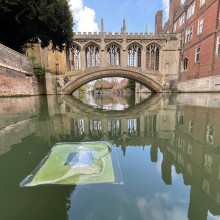
25:22 - Floating leaves are the energy of the future?
Floating leaves are the energy of the future?
We’ve all seen leaves floating idly down a river or stream, but perhaps fewer of us have thought that these could provide a source of clean fuel. Well, perhaps not a leaf in the traditional sense, but a project, dubbed the ‘floating leaf’, has been pond-ering the use of our waterways as a location to produce hydrogen fuel. Will Tingle visited St John’s College, Cambridge to see the floating leaf, and to speak to Virgil Andrei, the paper’s co-lead author, about the potential that the project holds.
Virgil- If you look at the trends in development over the past decades in the electronics industry, you will see that people started with these types of bulky electronics - think about the first mobile phones. And then a huge technological improvement could be made by introducing modern fabrication techniques and re-naturalization. And this is how we could get thin smartphones, but we could also gain additional functionality. And this is basically what we wanted to show here. We wanted to show that we can introduce these types of modern fabrication techniques to artificial leaf production and, by doing so, we were not only able to make devices which are much more scalable and much lighter, but we also gained additional functionality. So now we have these devices that can actually float on rivers since they're so light that the bubbles of products can raise them up to the surface.
Will- This contraption that's been dubbed the 'floating leaf'. What is it? And what does it do?
Virgil- Well, this is a device which uses sunlight to convert small molecules like water and carbon dioxide into useful products like hydrogen or syngas.
Will- And how does that work?
Virgil- Well this leaf consists of two light absorbers. On one hand you have a yellow light absorber that uses blue light to produce oxygen from water. And on the hand, you have a light absorber which uses the rest of the light to reduce protons into hydrogen or CO2 into CO.
Will- There's a very clean form of energy production then?
Virgil- Yeah, this is a clean way of producing fuels. In principle, you only need sunlight and these molecules to produce your fuels.
Will- So this contraption you have in front of me, it's about the size of a coaster. I mean, how much energy output could be feasibly created from this prototype?
Virgil- Yeah. So using this type of prototype, we are able to produce several milliliters of hydrogen per hour. Right now, this is a very preliminary prototype. So you can't run much with that, but the beauty of this technology is that it's modular. So in principle, you can make an array of these leaves and then they could produce enough fuel to power an engine using a smaller remote community.
Will- And how cost effective would you say that this is right now?
Virgil- One of the main advantages of this leaf is that as compared to other technologies it uses a very small amount of material. We used a flexible, lightweight, thin substrate, which means that we could decrease the amount of material that we use for these devices 15 times. And obviously if you use a much smaller amount of material that would also have an economic benefit.
Will- So obviously this is quite small, quite a prototype, but as you say there is room for expansion. What sort of scale could you see these being rolled out to?
Virgil- Yeah, so as I was saying, this technology is very modular which means, while at this moment we were able to make devices which are 10 by 10 square centimeters, nothing stops us from making an array of these devices. You can have a square meter array and then obviously you can also install several of these arrays. So you could build something similar to a floating solar farm.
Will- And on that note. If all of this is floating, is it only confined to sort of rivers and canals where there isn't that much tidal action, or could it be rolled out to the sea? Are there any limitations on the location that they could be put?
Virgil- Well, obviously it's more convenient to place them on rivers and lakes because, as you were saying, there are less waves and less tidal movement. However, we also envisioned that these arrays could be placed somewhere near the shorelines or near remote locations like islands where you really need a remote way or a decentralized way to produce your fuels.










Comments
Add a comment